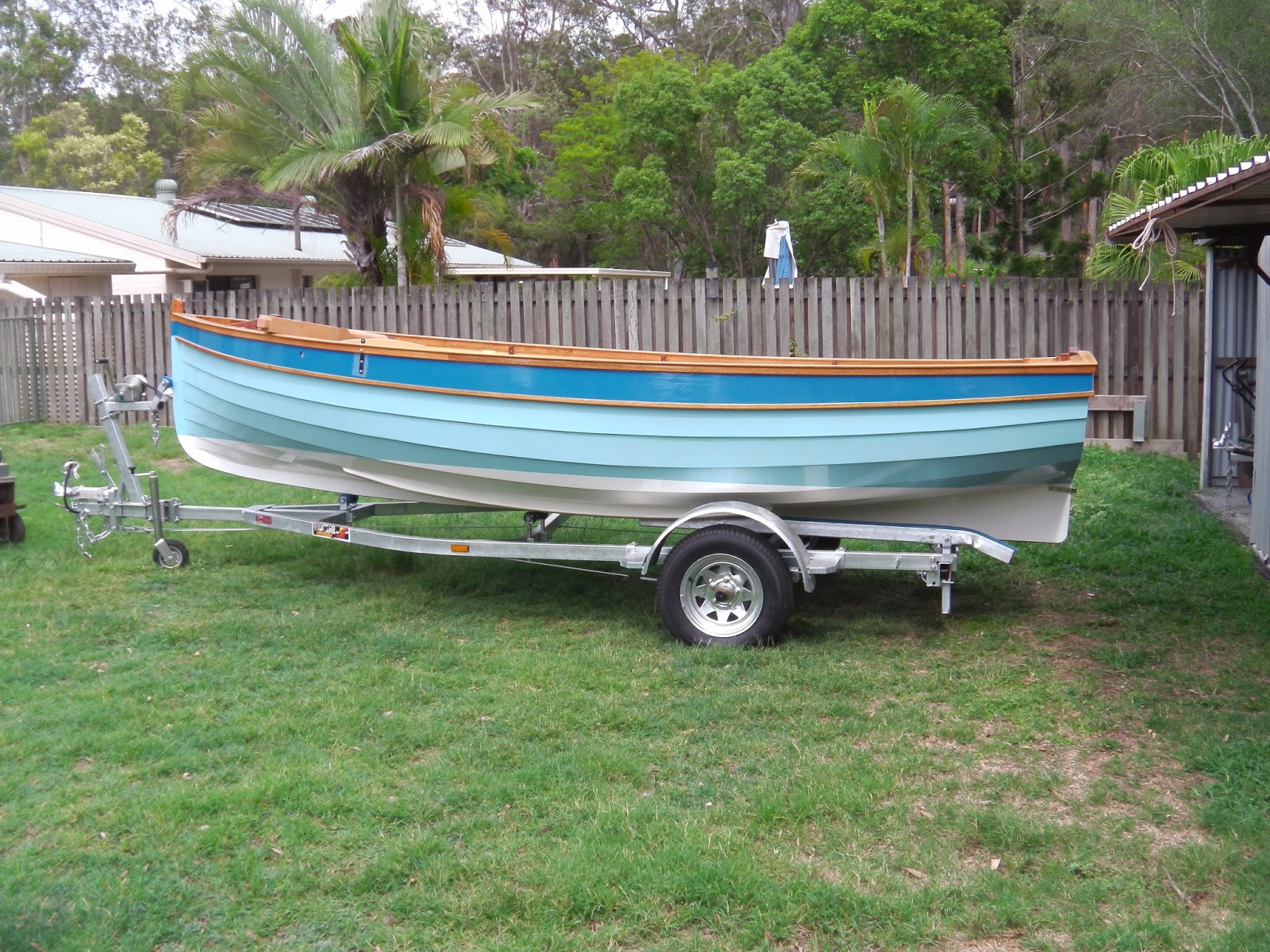To get the boat onto the trailer I lifted it up in two slings; the forward one has a block and tackle and the aft one is lifted with an engine crane. Fortunately this arrangement worked very well because I lost count of the number of times I lifted the boat on and off the trailer (and dragged the trailer out of the shed) as I adjusted the rollers and skids to fit. It remains to be seen if the boat launches and retrieves nicely with it set up the way it is now. Here is the boat waiting patiently for the trailer to be put back under it.
Here is a side view of the boat and trailer - only the second time the boat has been out of the shed.
Another side view from slightly forwards.
I stood the mast up with a piece of rope as a forestay. This was necessary to allow the side and forestay lengths to be measured. I will have these wire stays made up by a local chandlery. The mast rake appears greater than actual because the boat is not sitting level on the trailer, look at the waterline.
Here is a photo of the mast hinge. This seems to work OK and the mast is easy enough to raise and lower although a line through a block on the bowsprit is essential to hold it in place while a more permanent fastening is made between forestay and bowsprit for sailing.
Here are a couple of photos of the interior of the boat. The wood work is essentially complete except that I will put a couple of wooden hatches where the cross thwart runs into the side seats to provided access to the storage space underneath.
And finally, when I came to wheel the boat back into the shed, look what happens.
The lower part of the hinged mast is just too high to fit under the shed door. This is quite a problem as my intention was to store the complete boat in this shed in its final "ready to go" configuration with mast, spars and mainsail folded down. At the moment I have 3 solutions: store it elsewhere, build a new shed where the old one is or make a new mast with the hinge lower down. I am very tempted by the new shed because the old one only has 2.1M (7 foot) clearance under the roof trusses; a higher roof would provide more space and make the shed much cooler in the summer months. But it would be expensive! The solution will probably be a combination of store it elsewhere and make a new mast. My longer term plan already included a new mast made with the birdsmouth technique (hollow and much lighter). In the meantime it will be stored elsewhere, undercover but without walls.
Now to continue with the seemingly endless list of jobs and have some sails made.



















